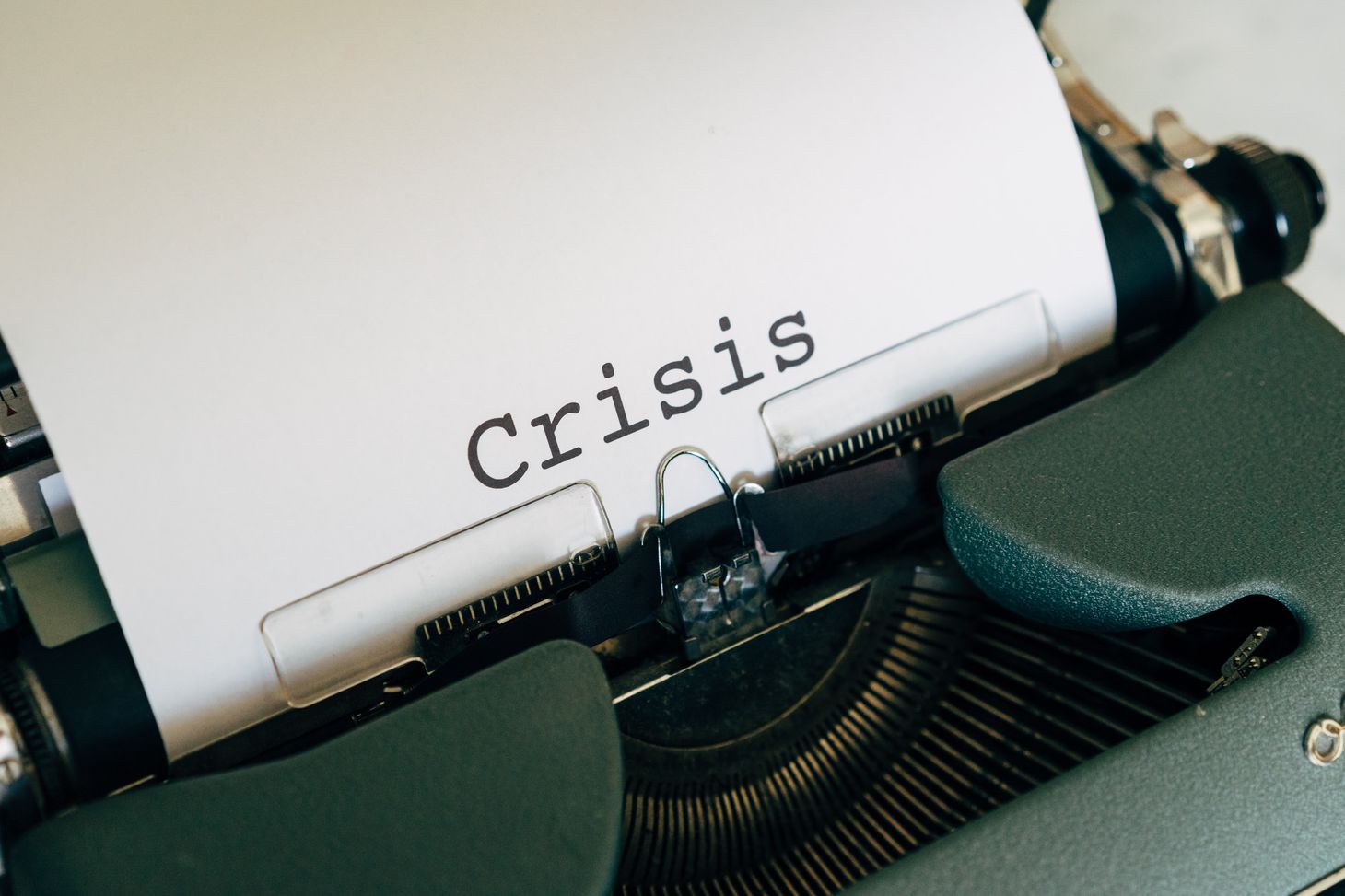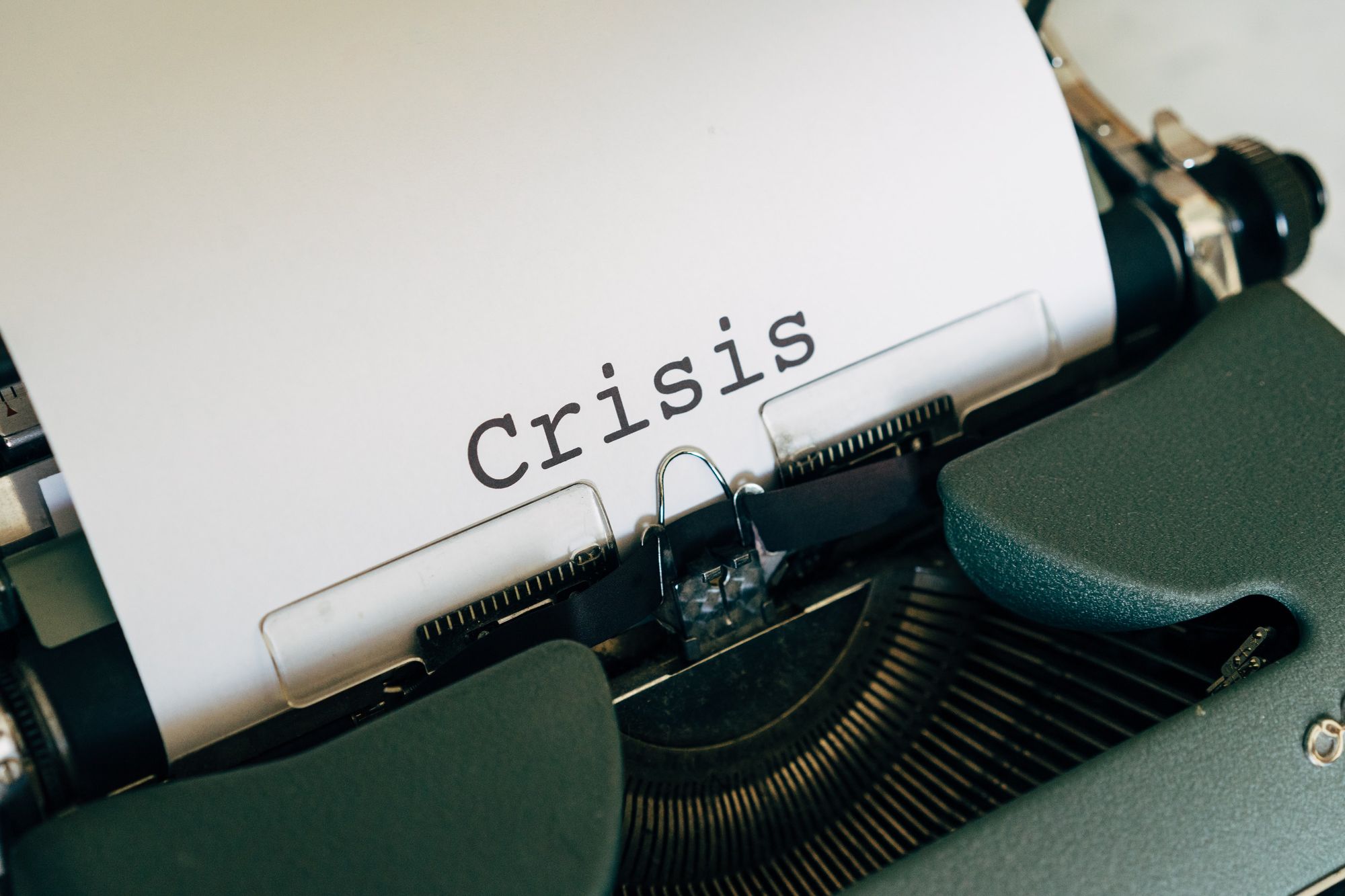Financial Crisis

Table of Contents
The world is passing through a Financial Crisis!
But, what does that even mean?
During conversations we often repeat something that we’ve read or heard. Somehow, this makes us feel good, because it proves that we know the topic. After all, that’s exactly what exams in school were about.
Let’s stop to ponder, is knowledge simply the ability to parrot information from various sources? Or does that act only create the illusion of knowing? Should we not dig deep to really understand the basics of important topics?
While talking to a friend about the financial crisis caused by the coronavirus, I realised that I needed a better understanding of it.
I’m writing about it here, so that the time I took to delve in can also benefit you. I hope you’ll enjoy it.
This note is structured in the following format (skip to a part by clicking on it) -
- What is a financial crisis?
- Comparing the Corona Financial Crisis (2020) with the Global Financial Crisis (2008)?
- What can we do? What is the government doing?
What is a financial crisis?

In context of finance, a crisis arises when – the financial system stops functioning smoothly.
So, what is this financial system?
The financial system is a time machine for money! Through it, those with surplus money (let’s call them savers) can transport their savings into the future, with the hope / expectation of getting more of it later. And those who need money today (let’s call them borrowers), can borrow it from the future.
The nonstop working of any machine requires constant supply of fuel. Similarly, this time machine needs the uninterrupted flow of money (facilitated by both – savers and borrowers).
A key assumption here is – money is the ultimate counterpart - a participant in every transaction. This makes money a desirable commodity in society, like a safety net.
Everyone strives to use this time machine efficiently… in order to maximise their safety net.
During a crisis, the flow of money in the machine starts to choke. This could happen due to a problem in any part of the machine. Sometimes demand is hurt, or supply can’t come through, mindsets of participants can change, an unusual event can cause damage. There can be many kinds of causes. But in effect, the flow of money chokes.
This causes distress to all participants, cos now, their safety net is fading. Savers fear that they wont get their money back. Borrowers can’t pay back what they owe. New borrowers can’t find any lenders. And thus, confidence in the time machine’s potency is lost.
This was from a banking and financial system point of view. Now let’s consider it from the real economy’s standpoint.
Generally speaking, economies reward activity! And activity leads to more activity. Businesses are started, jobs are created, savings are made, demand for goods and services rises, businesses prosper, banks give credit to businesses with growth prospects, investors make money, and so on.
Like a game of musical chairs.
But what happens when the music stops?
Everyone scrambles for a chair. In this case, everyone scrambles for liquidity (= cash or bank balance).
And the people who are left without chairs, in the game, lose. Similarly, and unfortunately, some people lose dearly during a financial crisis –
- businesses stagnate or even fail,
- resultantly, many people lose their jobs,
- a stressed business environment causes stock market crashes,
- many assets lose a large part of their financial value since there are no buyers,
- economic growth gets crippled (due to lesser demand and lesser supply),
- currencies can weaken,
- and broad pessimism spreads about the economic future.
Sounds daunting, doesn’t it? Well this is what the world is going through right now. And it’s never been more important to educate oneself.
Comparing the Corona Financial Crisis with the Global Financial Crisis

Let’s first understand both –
Global Financial Crisis 2008 (GFC)
Oversimplified version
- Ever since the start of the 2000s, residential real estate prices in the US had been soaring, and everyone wanted to make money in this boom.
- Banks were giving loans to anyone, who was willing to mortgage the property back to the bank. Even without considering the borrowers’ creditworthiness. The assumption was – the prices of houses would keep rising.
- Due to this, banks found themselves sitting on thousands of mortgages. So, they decided to sell these mortgages to other investors and financial institutions around the world, who wanted in on the action. The buyers of the mortgage received the right to receive interest and principal, and if the borrower defaulted, the right to take possession of the property.
- Soon enough prices of these houses became unsustainably high, and started to fall.
- Now, upon default of instalment payments by the borrower (which was inevitable, as loans were given to people with poor creditworthiness), on taking repossession of property, the owner of the mortgage couldn’t sell the house (since there were no buyers left) to recover their money. The result? Huge losses!
- Panic started to spread! Frenzy hit its highest point when major financial institutions started considering bankruptcy. AIG came close, and Lehman Brothers bit the dust in September 2008.
- Hence, the flow of money in our economic time machine got choked, and the ugly effects this has in the real economy ensued.
Corona Financial Crisis 2020 (CFC)
Oversimplified version
- An epidemic first identified in Wuhan, China in December 2019, by March 2020 started spreading all over the world. COVID-19 or simply the coronavirus, mainly attacks the human respiratory system, is contagious, and can be fatal.
- To combat this pandemic, global leaders effected nationwide lockdowns – asking citizens to quarantine themselves within their homes. Since savings lives was the foremost priority.
- These lockdowns delivered an agonizing blow to the economy, bringing many business activities to a halt. Translating into – lower production, breaking of supply chains, a halt in infrastructure projects and real asset sales, and so on.
- During such uncertain times, paralysed by low or no inflows, meeting monetary obligations becomes harder and harder for businesses and individuals.
- This situation forces people to eat into their savings - their prized safety net that they’ve spent years accumulating, through efficient use of the economic time machine.
- All this has created a pessimistic environment, impeding the flow of money in the financial system, and crippling the real economy.
Comparing the CFC and the GFC
- How it started?
- The lockdowns effected to control the coronavirus’ spread, hurt the real economy. This in-turn suffocated the financial system which took the form of the CFC.
- The GFC originated from bad behaviour in the financial sector and spread to the real economy.
- The thinking behind the solution?
- In CFC, since the foremost threat is the threat to human life, the hunt for a vaccine is on and how! To combat the financial strain – a variety of measures have been and continue to be taken (more on this in part 3).
- During the GFC, faith in the financial system was broken, so the solution had to inspire confidence in the financial system. It was hoped, that that would also heal the real economy.
- Uncertainty (the hallmark of any crisis)
- During the GFC, storied financial institutions were collapsing. Time and again, they gave out the message that they were fine, but no one knew whether to trust them.
- One can only guess, how the post-COVID world would be… what’s the future of manufacturing, retail, travel, hospitality, sports, entertainment, and so on?
- Global Coordination
- During the GFC, central bankers and policy makers from the largest economies in the world came together at a G20 meet to coordinate economic relief measures to stimulate economic activities. In general there was coordination between nations.
- During the CFC, there is gross mistrust between the two largest economies. Though there is phenomenal coordination between scientific and medical groups to combat the disease, on the economic side, countries seem to be taking tailored approaches.
I hope this gives you some insight into what we are facing, with the backdrop of the previous major financial crisis. With that, let’s move on to the next one.
What can we do? What is the government doing?

As with most things in life, the coronavirus too shall pass.
But from what we’ve seen in the last three months, it’s set to stay longer than we all initially anticipated. Till a vaccine comes around, our focus should be on how we can position ourselves, to not only survive this period, but also come out stronger on the other side?
First, we must realise that though the lockdowns have ended, the threat to human life remains. History tells us that - the Spanish Flu of 1918 was most devastating in its second wave. And there could very well be a second wave of the coronavirus in India. So let’s continue to be cautious, wear masks, exercise social distancing and maintain a high level of hygiene.
Second, since the economy has slowed down, and it looks like we’re going to be in a recession for the next 2-4 years, we must invest in ourselves. Improve our skills and build new ones. One could use this time to improve one’s health, mind-space, digital expertise, and so on.
Three key lessons ring through for individuals and organisations alike -
- Be more conscious of how your actions affect Mother Nature.
- Debt is a double edged sword. If you have any, pay it off as soon as possible.
- Invest in digital.
While science and healthcare have do the heavy lifting of saving lives, policymakers must shoulder the burden by saving livelihoods and incomes.
Let’s look at what the chief commander - the Reserve Bank of India (RBI) and the captain of the ship - the Government of India (GOI) have been doing to steer the ship to safety.
Reserve Bank of India
The RBI’s job is to regulate the flow of money in the economy, with the goal of controlling inflation. How does it do this? Well, the RBI regulates all the banks and NBFCs. And those two, put together, effect the flow of most of the liquidity in the system.
The RBI has taken a number of steps to free up liquidity and add more of it, to keep the economic time machine ticking. The rationale is - when businesses find themselves in a hole, they need extra liquidity for some time to dig their way out. By making liquidity available to the banks, the RBI has encouraged them to lend, and this should revive the economy ie. bring back the flow of money!
Yes, there could be some damage, like, rise in inflation (since more money is available but activity levels are still low), and some defaults by borrowers who are unable to dig their way out of this situation. But the other alternative is the death of many, many businesses.
Here is a simplified version of steps taken by RBI -
- For the banks -
- Banks are required to keep a certain percentage of its deposits with the RBI and an additional percentage with themselves, as a safety measure to meet withdrawal requests. These percentages have been reduced by the RBI. This frees up money for lending.
- Lent money to banks at attractive rates. This additional money was to be used to purchase corporate bonds, commercial papers and non-convertible debentures. This would ease redemption pressures being faced by companies borrowing through bonds.
- Guided banks to put in place disaster recovery and business continuity plans. Example - alternative data sites, etc.
- Allowed banks to participate in offshore currency markets. This allows banks to hedge their risks.
- Reduced compliance and regulatory burden on banks.
- Added funds to NABARD (National Bank for Agriculture and Rural Development), SIDBI (Small Industries Development Bank of India) and NHB (National Housing Bank). These provide long term funding to agriculture and rural sectors, small industries, housing finance companies, NBFCs and micro-finance institutions.
- The RBI is the banker for the Central Government and State Governments. States are allowed to borrow up to certain limits only. These limits have been increased and terms of borrowing have been relaxed.
- Other measures -
- Eased compliances on exports.
- Offered a liquidity facility to mutual funds, to support them during mass redemption pressure during this time.
- For the benefit of all borrowers - offered moratorium period on loans taken from all financial institutions, and then extended the period due to continued stress.
Government of India
The GOI is similar to a team of whole time directors who run a massive company called India. They’re tasked with a wide range of functions. From an economic policy standpoint however, the GOIs job is to achieve the economic growth target in an inclusive manner, and reduce unemployment. How is this done? By supporting the business and entrepreneurial environment in the country through - development projects, tax and regulatory policies, fair and approachable departments, attracting foreign investment, access to finance, and so on.
The GOI has taken the following steps to save lives and livelihoods, and to reposition India as a stronger economy. It’s an ambitious plan covering a multitude of topics, and execution will be key.
- For economically backward classes - Direct benefit transfers, free ration, free gas cylinders, special credit facility for street vendors, doubled cap of collateral free loans to women in self-help groups, loan relief.
- Financial support to - senior citizens, widows, specially abled, women jan-dhan account holders.
- For migrant labour - shelters created for urban homeless providing three meals a day + essentials (face masks and hand sanitisers), free food grains, MGNREGA support to returning migrants, etc.
- For frontline workers - free - medical insurance with ₹50 lakh cover, masks, hydroxychloroquine tablets, PPEs.
- For farmers - direct benefit transfers, distribution of many more kisan credit cards, and agri loans with moratorium benefit announced.
- Total overhaul of the agriculture supply chain planned through a new central act (coming soon). Through cluster based approaches micro enterprises will be formalised. Schemes for transportation and storage of all fruits and vegetables announced. These reforms will allow farmers to access a wider market and get better prices for their produce, and should attract participation from the private sector, agri entrepreneurs and startups.
- For MSMEs (Micro, Small and Medium Enterprises) measures like - collateral free loans, equity infusion, TDS relaxations, eased compliance, provident fund contribution. Disallowing global participation in tenders up to ₹250 Crores. Liquidity support to lenders.
- For formal economy workers - health and safety code made applicable, annual health check-up and appointment letters made mandatory.
- Tech driven online education - Radio and podcasts to be used. 3 channels launched, 12 in pipeline. Support for visually and hearing impaired students. Health and emotional well being support for students, families and teachers launched. Top 100 universities to be permitted to start online courses.
- Reforms focused on the ease of doing business announced - empowered group of secretaries appointed to fast-track clearances, project development cells within each ministry to be set up, states to be ranked on investment attractiveness to promote healthy competition.
- Sector specific initiatives announced in - power sector, battery storage, coal mining, minerals, defence, aviation, social infrastructure (roads, railways, public facilities, etc), space exploration. This should bring in more private participation and hence improve efficiency.
- Some other initiatives -
- Changed FDI policy to protect Indian companies from opportunistic acquisitions from abroad.
- Infused liquidity into power distribution companies.
- Schemes announced for converting government funded housing in cities into affordable rental complexes. And incentivising development of affordable rental housing.
- Set up PM Cares fund - to combat the pandemic.
- Set up a Rural Infrastructure Fund.
- Afforestation initiatives launched to help restore ecological balance and provide jobs.
- Provided financial support to dairy corporations and beekeeping initiatives.
- Offered relief to fisheries industry.
- Vaccination and tagging of animals done on a large scale.
Though I’m concerned about the spread of the pandemic, the ominous second wave, and the cruel impact COVID will have on our country’s fiscal deficit (amount by which government spending exceeds government revenue) - I genuinely feel optimistic about the prospect of India coming out stronger on the other side of this financial crisis.
Stebi Newsletter
Join the newsletter to receive the latest updates in your inbox.

